Shop the Zero G Peak Carbon and the Zero G Peak Carbon – Women’s.
Technica, known for its success with the four-buckle descent-oriented Zero G Pro Tour boot, brings the Zero G Peak Carbon to market in the 1000-g class. Here’s a WildSnow look at the ZG Peak Carbon .
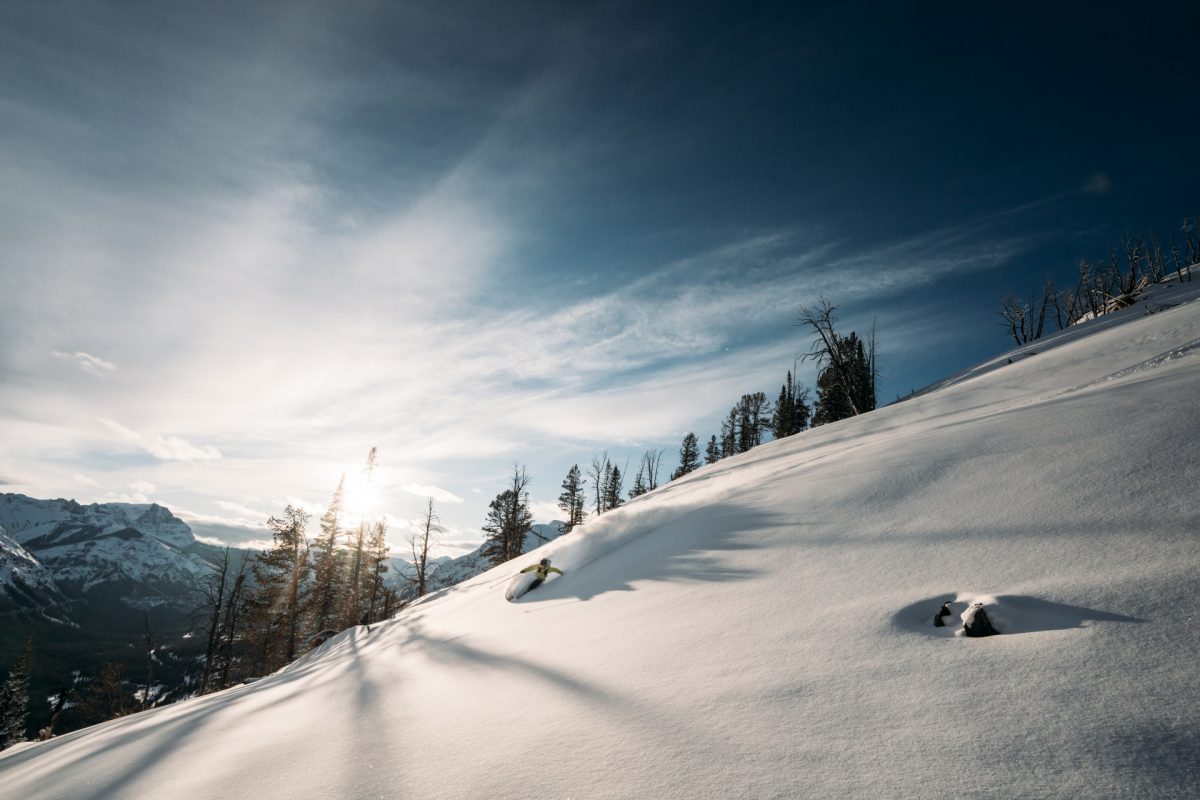
Ben Hoiness, the author and Zero G Peak Carbon fan, enjoys Cooke City’s winter light. Photo: Leslie Hittmeier.
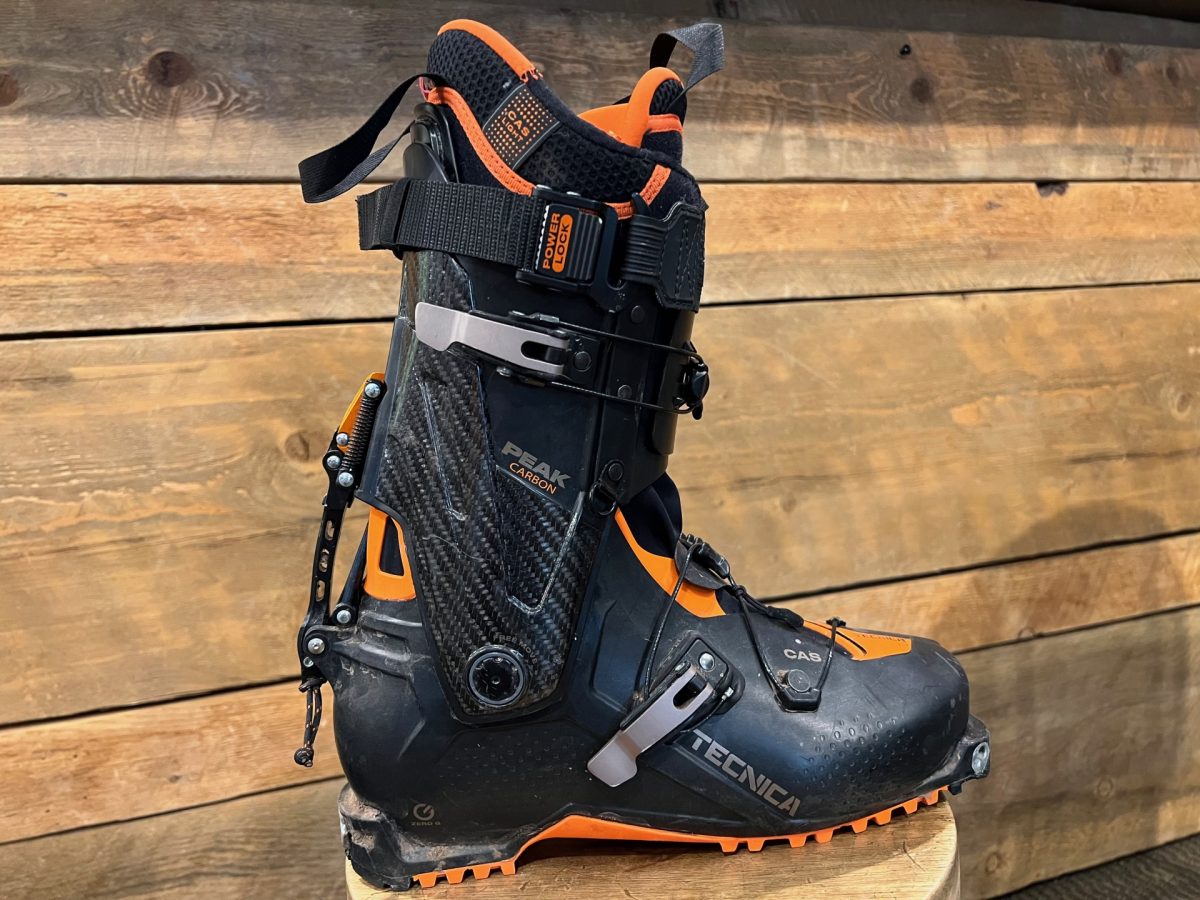
Tecnica makes a big splash in the 1kg class of ski boots with the new Zero G Peak Carbon. This is a lovely looking boot for demanding skiers.
Size tested: 26.5
Stated Weight: 990 Grams. (Actual weight 1,013 demo version)
ROM: 75-degrees
Materials: Carbon cuff, carbon-infused grilamid lower.
Sole: Vibram
Forward Lean: 13-degrees, bumps to 15-degrees by adding a spoiler.
MSRP:$949.95
Read the Zero G Peak Carbon First Look
After spending a big Montana spring skiing this boot, I’m psyched to get this review out into the world. I’ve spent a good amount of time touring, scrambling, climbing ice, and boot packing in the Zero-G Peak; here’s my honest opinion on how this boot suited my mountain travel.
A little background on my daily skiing set-ups and terrain: I primarily ski a Zero G Tour Pro in a 25.5 (4 buckle big boot) and a Scarpa F1LT in a 26 (the 1 kg little boot). I typically ski my big boots on days when I’m more focused on the skiing or if I’m less concerned about speed on the ascent. I ski the Zero G Pro with three different skis, the 4FRNT Renegade122, MSP 107, and MSP99. As for my lighter boots, I tend to ski these on bigger days (8-12k vert) or when speed on the ascent is paramount. I also prefer to ski a little boot in terrain where I am mainly hop turning as I find it easier to maneuver the ski with a lightweight boot. I ski the 4FRNT Hoji112, Raven104, and MSP99 with this boot. I live in Cooke city in the winter and my terrain varies from low-angle tree skiing to steep peak skiing when conditions allow. — From Ben’s first look.
ZERO G Peak Carbon Z-cable Closure
First off, there are some significant differences in the design that I have outlined in a few photos below that I think are a major driving force in the improved skiability of the Zero G Peak Carbon over its competitors. The first is the closure. The closure on the Peak Carbon utilizes what Tecnica calls it a “Wrapping Shell Construction.” This construction is borrowed from more downhill-oriented boots and is employed to lock your foot into place by overlapping the shell with a single lower buckle tightening a Z-cable over the fore and midfoot. In my experience, this closure feels and skis much more secure than the BOA systems utilized on other boots in this class. Other makes using BOA-like closures are the Scarpa F1LT, the Dynafit TLT X, the Salomon S/LAB MTN Summit, and the Fischer Travers CS.
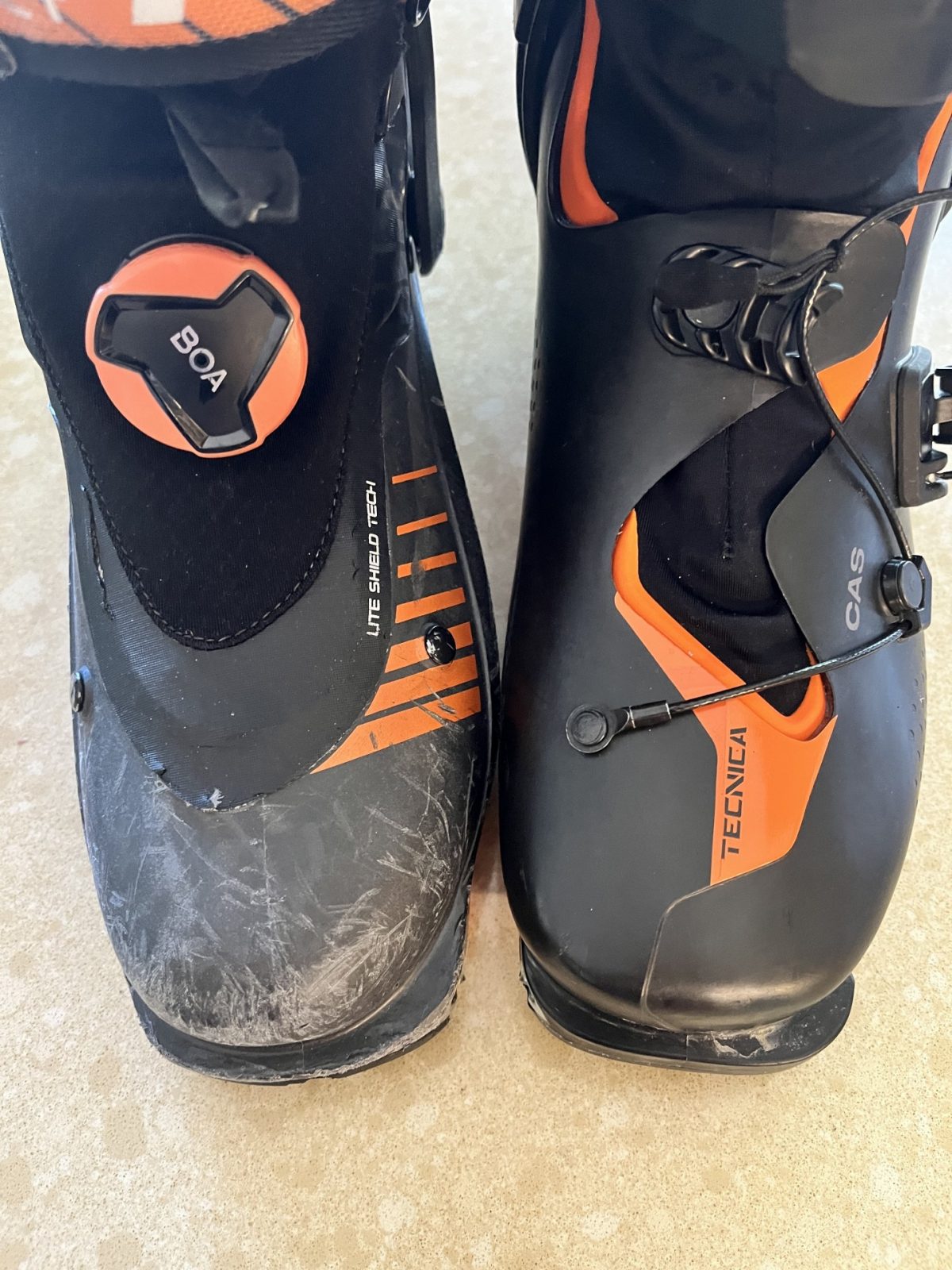
The Scarpa F1LT (left) employs a BOA closure, whereas the Peak Carbon uses a Z-cable system to snug the lower foot and secure the ankle/heel in place. The Peak’s shell also wraps further up on the forefoot.
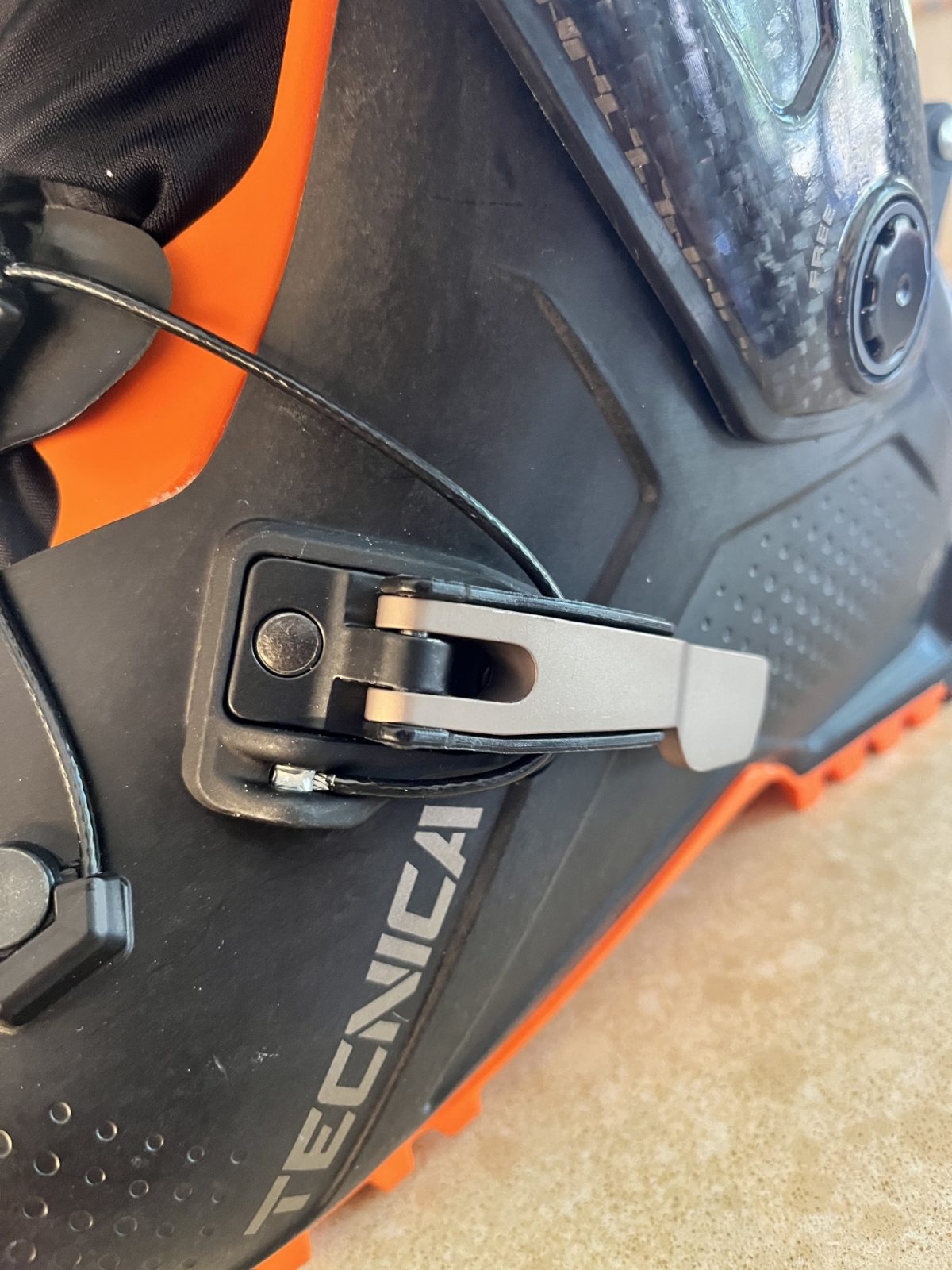
The lower buckle on the Peak Carbon is recessed nicely and firmly snugs up the Z-cable for a solid fit.
The second noticeable difference in the Peak Carbon is the shell construction, or rather the shape of the shell. The shape of the Peak Carbon’s shell varies from Scarpa’s LT and RS Lambda frame in one seemingly important spot — see photos.
I believe the construction of the Peak Carbon shell allows for more torsional flex and minimizes slop compared to the Lambda. In the photo, the Peak’s shell wraps further up and around the sides of the foot, relative to the Scarpa F1LT. Lastly, the cuff closure of the Peak Carbon is simple, solid, and reliable. It utilizes a single upper buckle (same buckle as the lower) and a power strap with a camming buckle and G hook. This is a big improvement over the velcro cuff closure of its competitors.

In this side profile, we see the outer shell of the F1LT and Peak. The Peak Carbon provides more shell material near the outer ankle to provide excellent lateral stability.
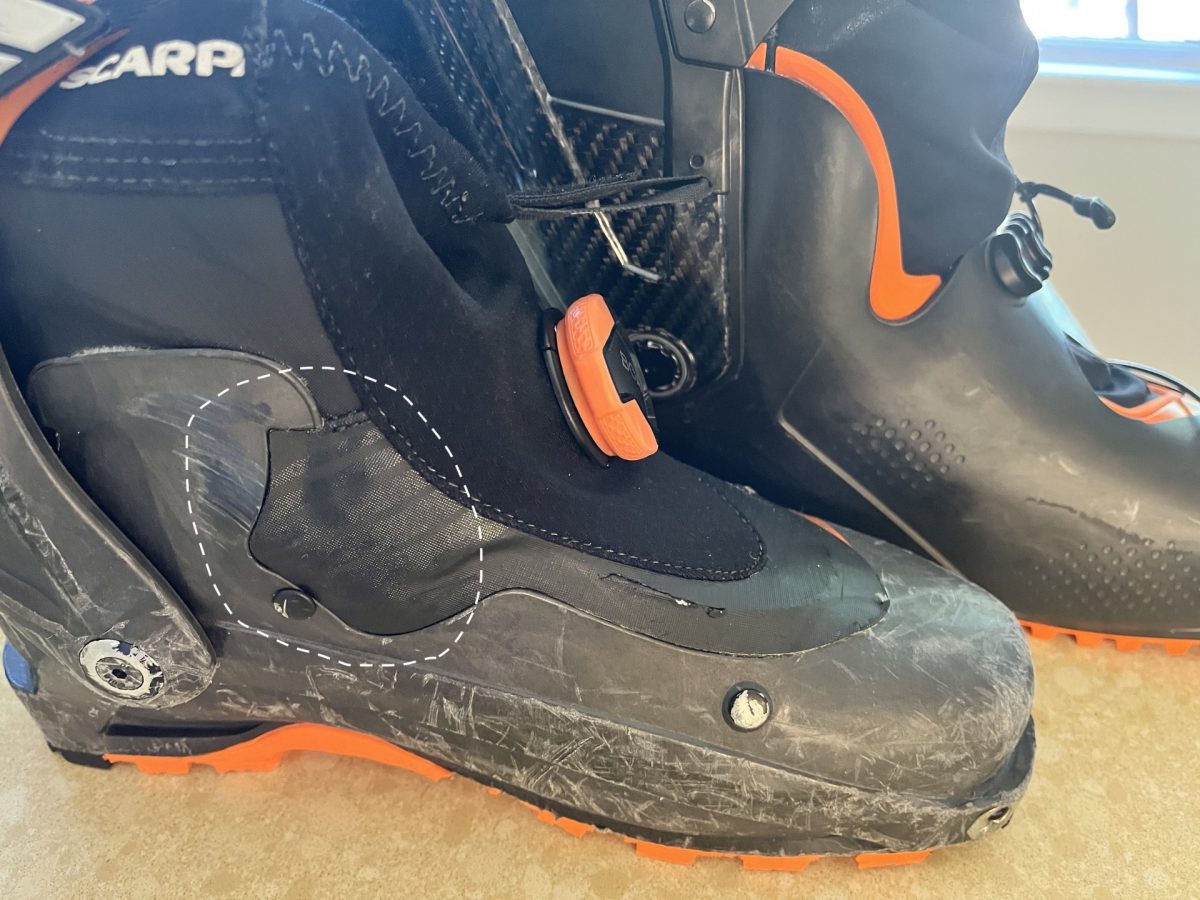
In this side profile, we see the inner shell of the F1LT and Peak Carbon. The Peak Carbon provides more shell material near inner ankle too. This too provides excellent lateral stability.
The last piece of design I want to talk about is the ski/walk lock mechanism; this design element gives me the most pause. The design is similar to the larger, stiffer cousin to the Peak Carbon, the Zero G Pro Tour, but the lockout mechanism significantly slimmed down on the Peak. The mechanism does a fantastic job locking the boot forward and backward; my main concern is its durability. When in walk mode, the spring-loaded throw protrudes more than its competitors and maybe more prominently than on any other touring boot I’ve used. So far, I have been happy to say the mech has held up great, but I will continue to monitor this in the long run.
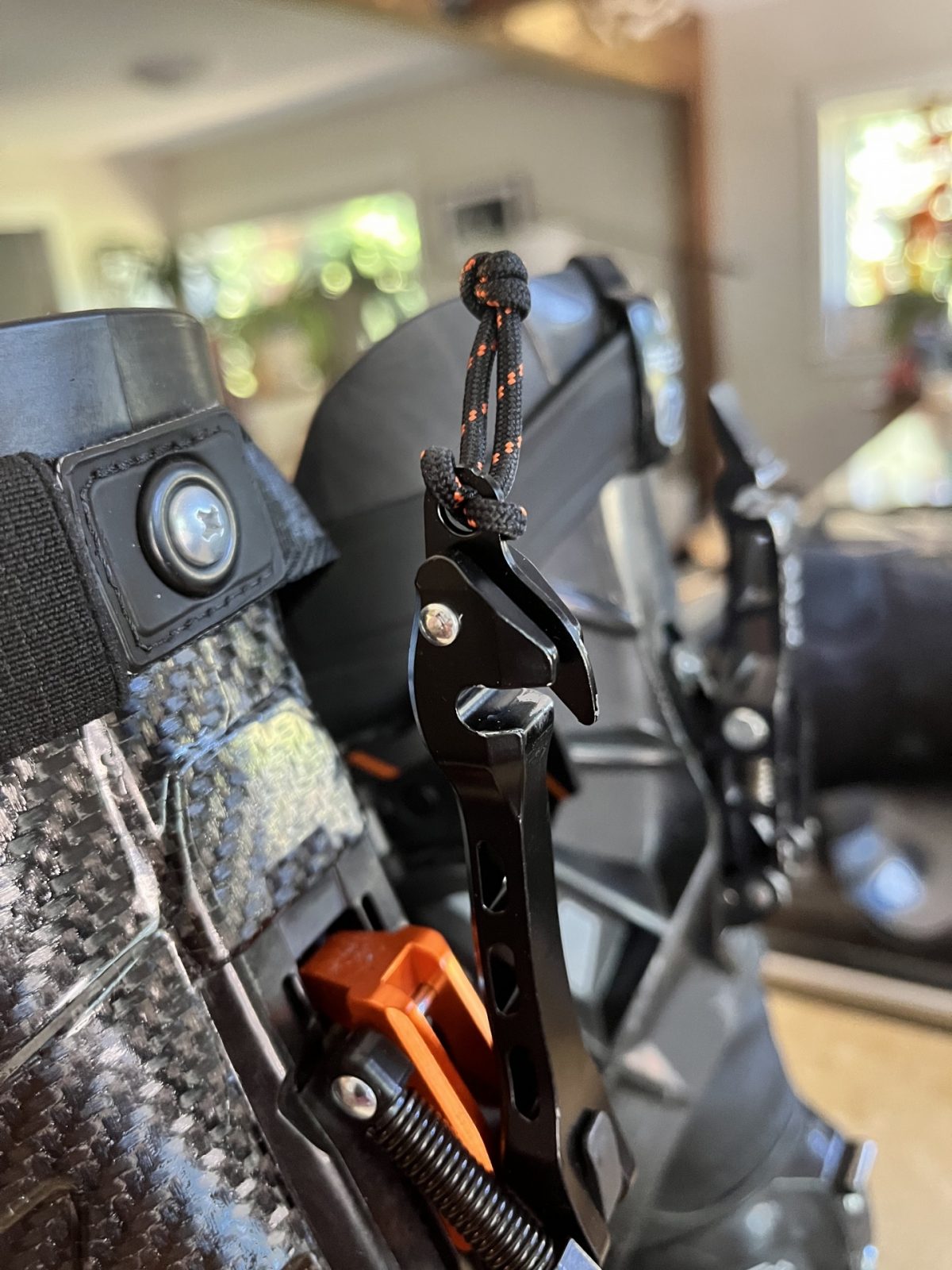
The Peak Carbon’s walk mechanism protrudes from the boot’s rear when flipped up into walk mode. This might be something to keep your eye on when booting and climbing.
Peak Carbon Downhill Performance
The downhill, this is what it’s all about anyway, right? Most of us agree that boots in the 1,000-gram weight class will walk pretty darn well, and the Peak Carbon is no exception here. I’ll dig into the nuances of walking, but first, let’s hone in on skiing. The biggest difference here compared to other boots is the predictability of the boot in adverse conditions. When skiing a light boot, I find it most challenging when I’m bouncing through chop, skiing a fast out track, or anytime the boot needs to flex through snow that isn’t uniform in density or shape. The Peak has a slightly softer flex than the Scarpa F1LT, but the flex is much more progressive, allowing for more predictability through the turn.
Peak Carbon Conclusions
Most of our time in a 1kg boot is in walk mode, and as I stated above, most boots in this class walk quite well, and the Peak is no exception to that general rule. The Peak Carbon has plenty of ROM for long strides across the flats. It climbs well and feels stable on small edges and steep ice bulges. The boot breathes well for high output ascents and has been warm enough for colder days. I’ve worn the boot in temperatures of 5F-45F, and although I haven’t tested this boot in sub-O-degree F conditions, It has been warmer than the F1LT when compared side by side.
Overall, If you can’t tell, I have been psyched on this boot on everything from the durability to the downhill performance. I’m excited about the first boot in this class from Tecnica and look forward to any incremental improvements.
Ben grew up climbing, skiing, and fly-fishing in the Greater Yellowstone
Ecosystem and has been lucky to continue living in this great place. Ben began
guiding fly-fishing at age 18 while attending college at the University of Montana,
where he studied cartography and resource conservation. At age 23, he began a
career as a mountain guide and began work for Exum mountain guides in
Jackson, Wyoming, where he lived for 5 Years. Recently, Ben has moved back to
the mountains of his childhood and now resides in Red Lodge, MT, with his Wife
Leslie and his Dog Cash. He now splits time managing a family fly-fishing
business, ski guiding in Cooke City, and of course, getting into the mountains as
much as possible.
